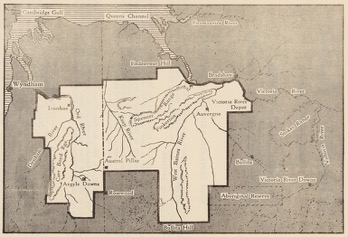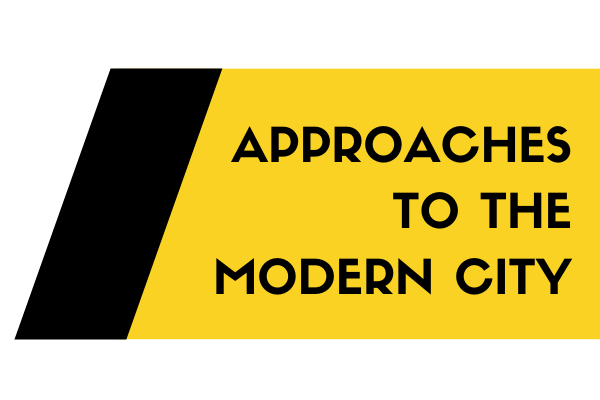By Luan Tian
Questions
- How has Australia’s involvement in major international wars impacted Melbourne, its demographic composition, and urban spaces?
- How has the arrival of wartime and post-war immigrants shaped the relationship between urban and rural areas in Australia?
- What are the political, economic, and cultural implications of their arrival?
- How has immigration altered Melbourne’s place in its national context?
- How does Melbourne’s experience inform the theory of war in urban history?
Discussion
With the increasing destructiveness of modern weaponry, cities were unprecedentedly threatened in the 20th century by warfare. Kenneth Hewitt theorises a “direct reciprocity between war and cities”: whereas cities contain “the definitive human places” that express collectiveness, war is the ultimate “occasion of collective violence that destroys places” (Hewitt 1983, 258). As cities in the scope of battle were erased, their congregations of people necessarily dissipated; they joined other existing human places, rebuilt the ruins after the war, or established new ones. My research focuses on World War I, World War II, and the Vietnam War, three instances of notable Australian involvement, to examine their effect on Melbourne through the resettlement of migrants, asylum seekers, and refugees. Against the intentions of policy-makers, wartime and post-war migration reinforced the importance of cities in Australian society. More importantly, each successive wave of migrants altered the demographic composition of Melbourne; national involvement in international wars demanded the city to become the centre stage for cultural diversification and remade Melbourne into the engine room of Australia’s transformations.
During and immediately after WWI, Australia and Britain established a program of assisted migration of ex-servicemen from the imperial centre to the dominion. There were strong voices of opposition; Britain feared the depletion of labour resources (Roe 1995, 12) while Australia was enshrouded in wartime xenophobia directed towards foreigners (Richards 2008, 67). On the other hand, the impetuses for migration were also well-justified. The British government, facing economic difficulties and needing to provide jobs and welfare to ex-servicemen, found a solution in resettling them “to farm imperial frontiers” (Roe 1995, 9). Australian politicians were motivated by the opportunity to inject labour and capital into the economy (Richards 2008, 101) and the need to strengthen ties with Britain for national security (Richards 2008, 70). Another key determinant was the “White Australia Policy”: British migrants were preferred as to avoid “depressed living standards” and “racial dilution” (Richards 2008, 37). The plan was thus formulated that the Commonwealth government would subsidise travel and state governments “would assist with loans for approved land-settlement and for public works associated with immigration” (Roe 1995, 21), so that the added manpower could cultivate Australia’s rural farmlands. Many British men “responded enthusiastically” and around 300,000 emigrated to Australia in the 1920s (Richards 2008, 82).
Despite the overt objective of stimulating the primary sector in rural Australia, British migrants flooded into existing urban spaces. Due to the outflow of Australian young men to fight in the European theatre, the country faced considerable demographic challenges: there was an excess of 20,000 unmarried women to men in Melbourne (Richards 2008, 77). On the one hand, certain urban industries undertook specialised recruiting to overcome this problem; the textile industry in Melbourne grew in the 1920s through imported labour (Richards 2008, 98). On the other hand, recruited farmers also moved into the cities, quickly abandoning their land upon arrival (Richards 2008, 77). Many migrants were poor, and judged to be “degenerates” and “imbeciles” (Richards 2008, 101). Established urban residents held the migrants in contempt, which is ironic given the fact that their immigration was encouraged under the “White Australia” policy of the time. British ex-servicemen founded a journal, Austral-Briton, in which they complained of maltreatment; one Scotsman in Melbourne writes that “we from the Old Motherland are considered ‘dirty pommies’”, a derogatory term for the British, “and by no less than those who were recently ‘pommies’ themselves” (Roe 1995, 26). The experience of British migrants following WWI reveals that urban centres exerted considerable appeal even though the government mandate was to channel them into rural industries. In addition, while Melbourne faced demographic shortages resulting from the war, the locals were discontent with the influx of foreigners.
The next event that stimulated immigration to Australia coincided with the outbreak of WWII. Again, the British government urged Australia, in 1939, to accept migrants; this time, refugees from continental Europe made up the principal migratory demographic (Rosenbaum 2017, 192-4). Australia was an attractive destination because, as one refugee states, “it was as far away from Europe as possible” (Rosenbaum 2017, 205). As Parliament agreed to accept 15,000 Jewish refugees from 1939 and 1942 (Richards 2008, 147), this wave of immigration revealed the continuities between WWI and WWII. First, like the British ex-servicemen before them, Jewish refugees were regarded with “hostility and condescension”—but this time, the sentiments were exacerbated by the threat they were perceived to pose to “White Australia” (Richards 2008, 146-7). Second, the government persisted in its self-interested rationale that immigrants brought capital and labour to stimulate the economy. Nonetheless, there existed a clear prejudice against Jewish refugees. They had to possess at least A$3,000 to be allowed to settle, while the capital requirement for “Aryans” and “non-Aryan Christians” was set between A$200 and A$1,000 (Rosenbaum 2017, 161).
Furthermore, the rural-urban debate featured strongly in discussions of Jewish resettlement. The international Jewish solidarity group “Freeland League for Jewish Territorial Colonisation Overseas” proposed a rural settlement in the Kimberley region at the northwest tip of Western Australia, and this plan was popular among local sympathisers and Jewish communities (Richards 2008, 150). However, the assumption that rural Australia could support up to 50,000 Jewish refugees was bluntly challenged in 1942 by the public servant William Douglass Forsyth, who argued that rural areas were mostly uninhabitable; the Kimberley Plan was “doomed to certain failure” and the “drift to cities was inexorable” (Richards 2008, 154). Indeed, Jewish refugees who arrived during WWII did mostly settle in cities and some made positive contributions to urban life despite the difficulties of cultural acclimatisation (Rosenbaum 2017, 258-9). Between 1914 and 1945, the logic of migration, resting on two pillars, and its subsequent realities, changed very little. First, the tenet of “White Australia” remained dominant, although both British and non-British migrants were treated with suspicion. Second, the Australian government maintained its interests in immigrant labour and capital, especially to cultivate rural farmlands, even though cities appealed to the great majority of migrants.

Figure 1: Kimberley Plan for the resettlement of Jewish refugees. (Kununurra Historical Society)
The Vietnam War, however, forced the collapse of the pillars that had maintained Australia’s migration policy in the first half of the 20th century. Between April and May of 1975, coinciding with the fall of Saigon, 135,000 Vietnamese people escaped the country as wealthy or elite “anticipatory refugees” (Viviani 1984, 20). Then, between 1975 and 1978, more people left the country as repressive economic and political measures were implemented by the communist government (Viviani 1984, 24). During this time, the Australian government resisted strong demands for accepting refugees and only 5,000 a year were permitted to enter (Viviani 1984, 82), reflecting deeply-rooted fears towards its Asian neighbours and the prevailing cultural sway of “White Australia” (Viviani 1984, 53). After 1978, boats began to arrive in northern Australia illegally and many perished at sea attempting to reach Australia. To counteract the illicit movement of asylum seekers, the government was compelled to increase the legal quota (Viviani 1984, 82). By 1981, 60,000 refugees from Southeast Asia, including 50,000 Vietnamese, were resettled in Australia (Viviani 1984, 51), climbing up to 100,000 by 1986 (Richards 2008, 261). While the label of “White Australia” was “removed from the main political platforms by 1965” (Richards 2008, 256), the inflow of Vietnamese refugees constituted an unavoidable confrontation with Australia’s new place in Asian affairs.
In addition, 90% of the newly arriving refugees entered the urban spaces of Australian cities (Richards 2008, 268) and Melbourne absorbed the greatest migratory impact of Australia’s involvement in international wars. Over the 20th century, following the waves of immigration discussed above, a divergence emerged between Melbourne (and Sydney) and the rest of the country. In 1947, British monoculture dominated all major cities. Today, Melbourne is classified as a “hyperdiverse” city (O’Hanlon and Stevens 2017, 560). At a national level, however, multiculturalism has yet to fully permeate Australian society, resulting in a departure of the Melbournian identity from national identity (O’Hanlon and Stevens 2017, 570). Continental European immigrants after WWII developed Melbourne to resemble Parks and Burgess’ concentric urban model (O’Hanlon and Stevens 2017, 564). Greek and Italian migrants, who followed Jewish refugees, settled in inner city suburbs for “manufacturing jobs and cheap housing”, expanding “manufacturing” and “construction” industries (O’Hanlon and Stevens 2017, 562). The Jewish refugees themselves formed communities in the southeast suburbs and their business interests defined Melbourne’s property development (O’Hanlon and Stevens 2017, 565). By 1991, the influx of immigrants from Asia added “food stalls, cultural activities, music and dancing” to Melbourne’s other inner suburbs; in 1986, at St Michael’s Primary in North Melbourne, 78% of students were of Asian descent, signalling the complete dismantling of “White Australia” (O’Hanlon and Stevens 2017, 567-8). As wartime and post-war migrants disproportionately flocked to Melbourne, they distinguished the urban space from the national context and forced the city to become a pioneer in Australia’s multiculturalism. Wars no doubt destroy urban places but they also instigate the remaking of others in distant geographies.
Sources
Hewitt, Kenneth. “Place Annihilation: Area Bombing and the Fate of Urban Places.” Annals of the Association of American Geographers 73, no. 2 (1983): 257-284.
O’Hanlon, Seamus, and Rachel Stevens. “A Nation of Immigrants or a Nation of Immigrant Cities? The Urban Context of Australian Multiculturalism, 1947-2011.” Australian Journal of Politics and History 63, no. 4 (2017): 556-571.
Richards, Eric. Destination Australia: Migration to Australia Since 1901. Sydney, Australia: University of New South Wales Press, 2008.
Roe, Michael. Australia, Britain, and Migration, 1915-1940. Cambridge, UK: Cambridge University Press, 1995.
Rosenbaum, Anna. The Safe House Down Under: Jewish Refugees from Czechoslovakia in Australia 1938-1944. Oxford, UK: Peter Lang, 2017.
Viviani, Nancy. The Long Journey: Vietnamese Migration and Settlement in Australia. Melbourne, Australia: Melbourne University Press, 1984.


One Reply to “Melbourne and War”